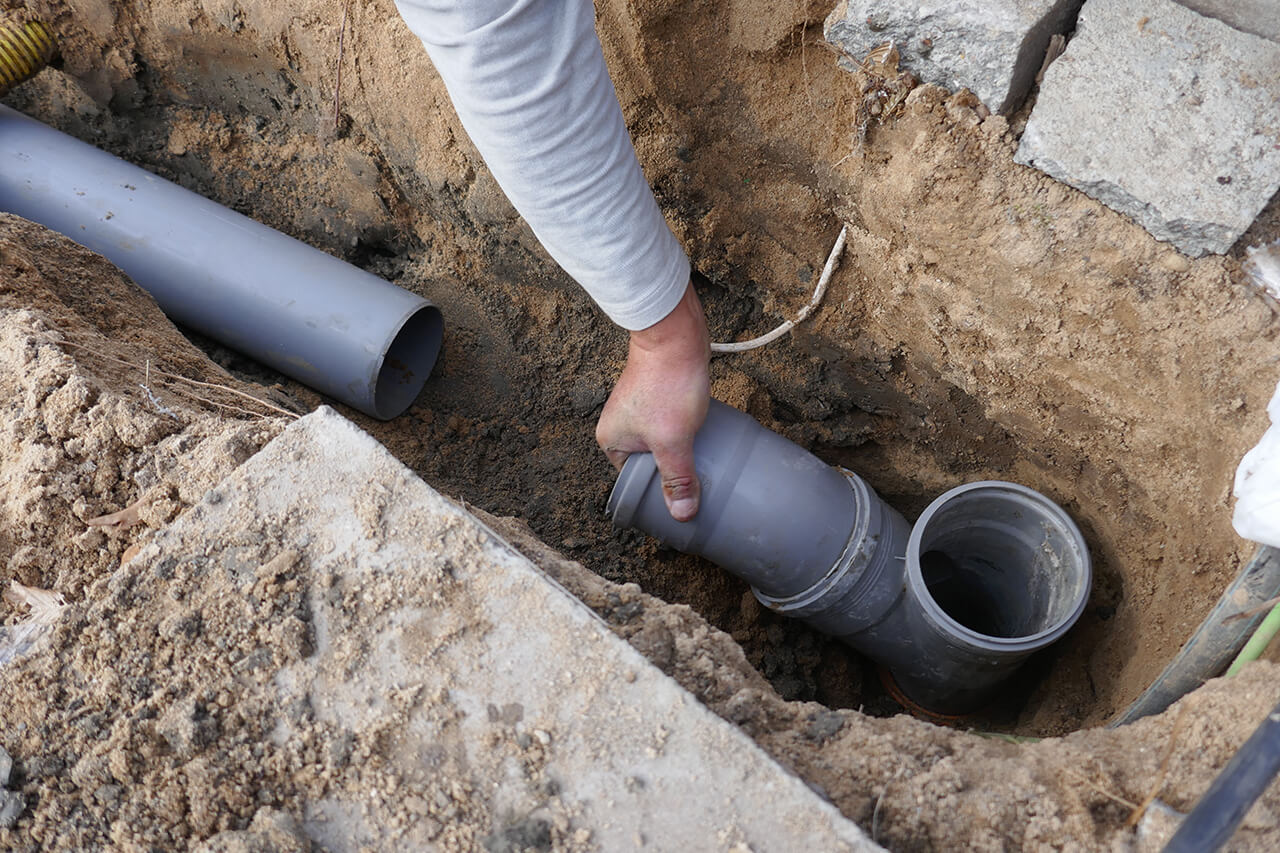
Get matched with top sewer main install, replace or repairers in your area
Enter your zip and get matched with up to 3 pros
Matching on HomeAdvisor


Sewer main install, replace or repairers in Nichols
No results for Sewer Main - Install, Replace or Repair in
Try adjusting your search criteria.Sewer main install, replace or repairs FAQs
When installing a sewer line, you should consider extra costs like tree removal, driveway repairs, or patio resurfacing. Hiring a professional plumber is essential, and you may need additional specialists if landscaping or heavy excavation is involved. Addressing these potential extras up front helps ensure accurate budgeting and prevents sudden cost overruns.
To calculate the length of sewer piping you need, measure the distance from your house to the main sewer line, adding the depth of the city main to this distance. Be sure to account for any obstacles like tree roots or utility lines that may require additional piping.
City sewer lines are installed at a lower elevation to prevent unwanted backflow and water damage. This lower positioning ensures enhanced performance and long-term safety, meeting all technical and safety standards.
With trenchless methods, a plumber inserts a smaller pipe within the existing plumbing, avoiding full excavation. It can be more cost-effective and less disruptive than traditional methods, but it's not suitable for all homes.
Yes, you must secure permission from your local water authority before connecting to a public sewer line. This approval ensures your connection meets all regulatory requirements.
Sewer lines are buried between 18 inches and 8 feet deep, with most systems placed between 18 and 30 inches. In colder regions, pipes are set deeper to remain below the frost line.





- Plumbing - Multiple Projects
- Shower Pan Install
- Plumbing for a Remodel or Addition - Install
- Plumbing Item Repair
- Water Heater - Repair or Service
- Sink Repair
- Steam Shower - Install
- Faucet Install or Replace
- Walk In Tub - Install or Replace
- Drain Repair
- Shower Install or Replace
- Pipe Repair
- Drain Line Breakage - Camera Locate
- Tankless Water Heater - Install
- Water Main - Install, Replace or Repair
- Sump Pump - Repair or Replace
- Sink Install or Repair
- Drain Clog or Blockage - Clear
- Sewer Main - Clear
- Faucets, Fixtures and Pipes - Repair or Replace
- Plumbing Item Installation
- Sink Installation
- Pipe Installation
- Faucet Installation
- Whirlpool Bathtub Install or Replace
- Plumbing Multi-Item Installation
- Water Heater - Install or Replace
- Drain Installation
- Plumbing Multi-item Repair
- Toilet Installation
- Bathtub Install or Replace
- Sump Pump or Interior Foundation Drains - Install
- Birmingham
- Phoenix
- Tucson
- Fresno
- Long Beach
- Los Angeles
- Modesto
- Sacramento
- San Diego
- San Francisco
- San Jose
- Denver
- Hartford
- Washington DC
- Fort Lauderdale
- Jacksonville
- Miami
- Orlando
- Tampa
- Atlanta
- Chicago
- Indianapolis
- Louisville
- New Orleans
- Baltimore
- Boston
- Detroit
- Grand Rapids
- Minneapolis
- Saint Paul
- Kansas City
- Saint Louis
- Las Vegas
- Albany
- New York
- Asheville
- Charlotte
- Greensboro
- Raleigh
- Winston Salem
- Cincinnati
- Cleveland
- Columbus
- Oklahoma City
- Portland
- Harrisburg
- Philadelphia
- Pittsburgh
- Providence
- Memphis
- Nashville
- Austin
- Dallas
- El Paso
- Fort Worth
- Houston
- San Antonio
- Salt Lake City
- Norfolk
- Richmond
- Virginia Beach
- Seattle
- Madison
- Milwaukee



